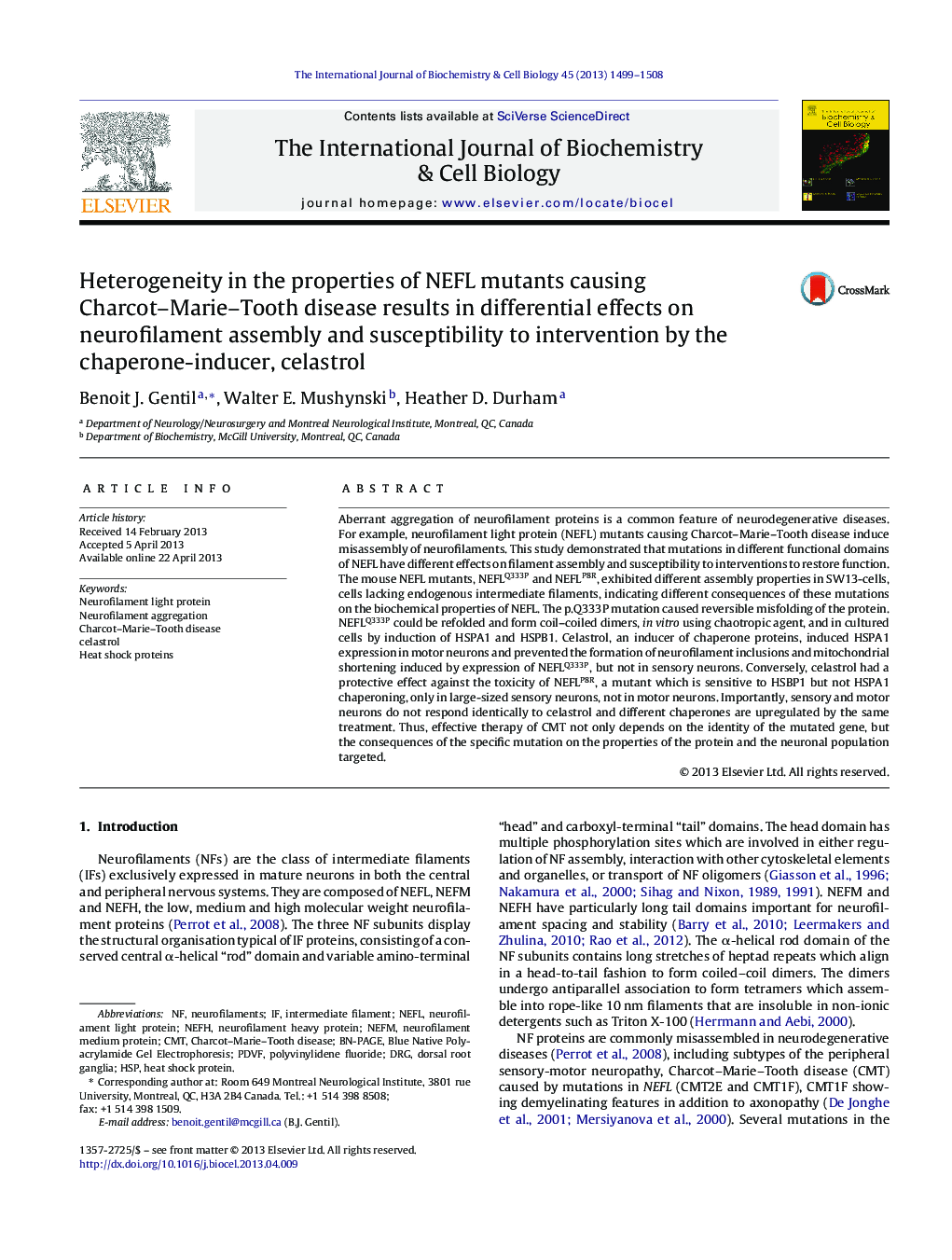| کد مقاله | کد نشریه | سال انتشار | مقاله انگلیسی | نسخه تمام متن |
|---|---|---|---|---|
| 1983691 | 1539904 | 2013 | 10 صفحه PDF | دانلود رایگان |

• CMT-causing mutants NEFLQ333P and NEFLP8R have different biochemical properties.
• Celastrol induced different HSPs in cultured sensory neurons and motor neurons.
• Celastrol treatment prevented NEFLQ333P-induced abnormalities only in motor neurons.
• Celastrol treatment prevented NEFLP8R-induced abnormalities only in sensory neurons.
Aberrant aggregation of neurofilament proteins is a common feature of neurodegenerative diseases. For example, neurofilament light protein (NEFL) mutants causing Charcot–Marie–Tooth disease induce misassembly of neurofilaments. This study demonstrated that mutations in different functional domains of NEFL have different effects on filament assembly and susceptibility to interventions to restore function. The mouse NEFL mutants, NEFLQ333P and NEFLP8R, exhibited different assembly properties in SW13-cells, cells lacking endogenous intermediate filaments, indicating different consequences of these mutations on the biochemical properties of NEFL. The p.Q333P mutation caused reversible misfolding of the protein. NEFLQ333P could be refolded and form coil–coiled dimers, in vitro using chaotropic agent, and in cultured cells by induction of HSPA1 and HSPB1. Celastrol, an inducer of chaperone proteins, induced HSPA1 expression in motor neurons and prevented the formation of neurofilament inclusions and mitochondrial shortening induced by expression of NEFLQ333P, but not in sensory neurons. Conversely, celastrol had a protective effect against the toxicity of NEFLP8R, a mutant which is sensitive to HSBP1 but not HSPA1 chaperoning, only in large-sized sensory neurons, not in motor neurons. Importantly, sensory and motor neurons do not respond identically to celastrol and different chaperones are upregulated by the same treatment. Thus, effective therapy of CMT not only depends on the identity of the mutated gene, but the consequences of the specific mutation on the properties of the protein and the neuronal population targeted.
Figure optionsDownload high-quality image (124 K)Download as PowerPoint slide
Journal: The International Journal of Biochemistry & Cell Biology - Volume 45, Issue 7, July 2013, Pages 1499–1508